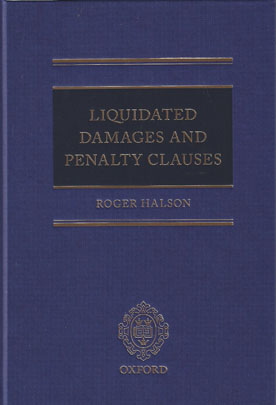
This, the only book in print to focus on liquidated damages and penalty clauses, analyses the common law jurisdiction to control stipulated damages clauses, and the distinction between enforceable liquidated damages clauses and unenforceable penalty clauses.
The first part examines the historical origin of the control of these clauses, the second describes the current control of such clauses and their legal effect, the third critically examines the various rationales that have been proposed to justify their regulation and the final part describes analogous provisions and how to avoid drafting contractual clauses that are rendered unenforceable by the penalty rule.
The book examines approaches in several common law jurisdictions in addition to England and Wales, including the United States, Australia, New Zealand, and Canada, and brings together principles developed in distinct commercial law contexts (such as shipping contracts) to enable comparison between particular contractual settings.